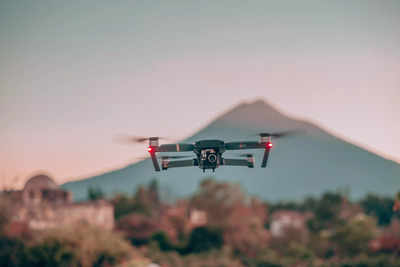
The DRDO has asked Bharat Electronics Limited (BEL), Larsen and Toubro, and Adani Group to develop anti-drone technology. The anti-drone tech is needed to detect, deter, and destroy incoming drone threats. The unique nature of drones requires a combination of detection capabilities including microwave, infrared, and visible light to guarantee effective defense. The counter-drone system works by detecting, tracking, and identifying drones through diverse sensors, and it includes components such as radar, cameras, communication jamming, GPS interference, and laser weapons.
The
Defence Research and Development Organisation
(DRDO) recently sought interest from companies to develop anti-drone technology. Now, a report by The Hindu has revealed that
DRDO
has asked
BEL
, Larsen and Toubro, and Adani Group to develop the tech. In its expression of interest, DRDO detailed how anti-drone tech works and why it is needed.
“To mitigate and negate the impact of drones, there is a requirement to develop and deploy counter drone systems for detection, deterrence and destruction of incoming drone threats,” said DRDO in the EOI letter.
As per DRDO, considering the unique nature of drones in terms of speed, size, hovering capability and resemblance to birds, no sensor system in standalone will be able to provide sufficient detection, tracking and identification capability to guarantee a reliable
and effective defence against threats from drones. Conventional air defence solutions presently available with the country, which are designed to detect large, fast moving aerial objects, are not effective against small, low flying and slow-moving drones. “Therefore, a combination of several types of detection capabilities including emission and reflection of microwave, infrared, visible light etc are required to detect and identify drones,” noted DRDO.
How does a counter drone system work?
A counter-drone system is designed to detect, track, and identify airborne drones through the utilisation of diverse sensors. It facilitates the seamless transfer of this information to affiliated systems, enabling the deployment of counter techniques to thwart their intended operations. These countermeasures include soft kill methods to disrupt functionality and hard kill options for the outright destruction of the detected drones, as per DRDO
The system can detect, identify and neutralise different types of drones including Small Hybrid UAVs, Micro UAV/ Multi rotor, and Nano UAVs.
The Counter Drone System comprises several integral components to effectively neutralise airborne threats. Firstly, it incorporates a state-of-the-art drone detection and tracking radar, ensuring precise monitoring of aerial targets. Complementing this radar capability, a day and night camera equipped with laser ranging technology enhances the system's proficiency in detecting and tracking drones. To implement soft kill measures, the system features a Communication Channel Detection & Jamming system, effectively disrupting the communication channels of the targeted drones.
Additionally, a
GPS
Jamming/Spoofing System is integrated, further impeding the drones' capabilities through GPS interference. For more decisive actions, a Laser Directed Energy Weapon System is included to execute hard kill strategies. Centralising control and coordination, the Command & Control Centre (C3) serves as the nerve center of the system, empowered by a reliable power source to ensure the seamless operation of the entire counter-drone system.












 English (US) ·
English (US) ·